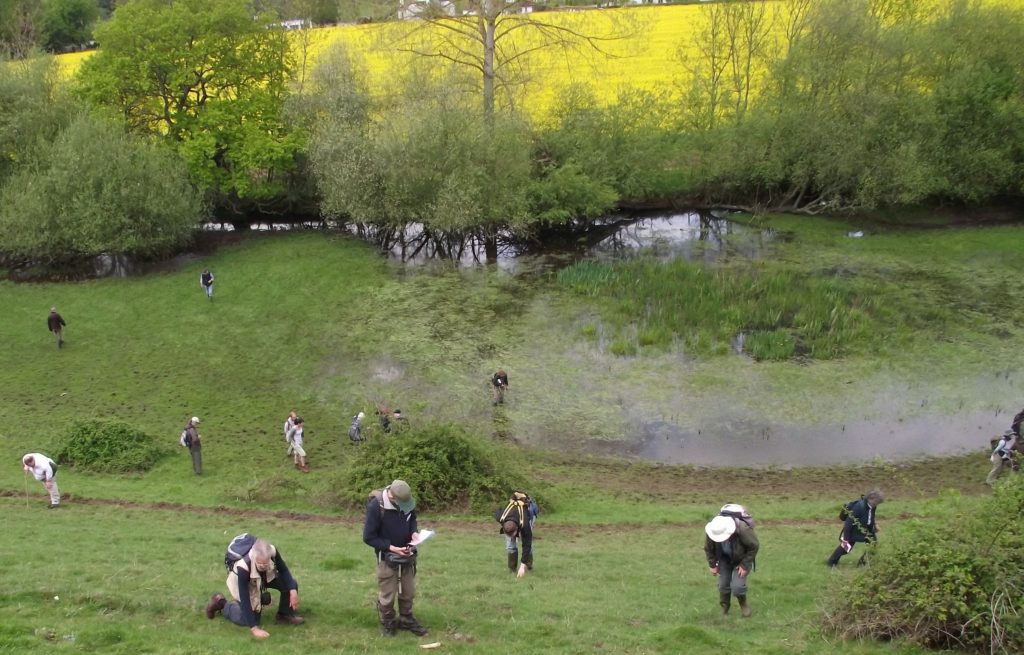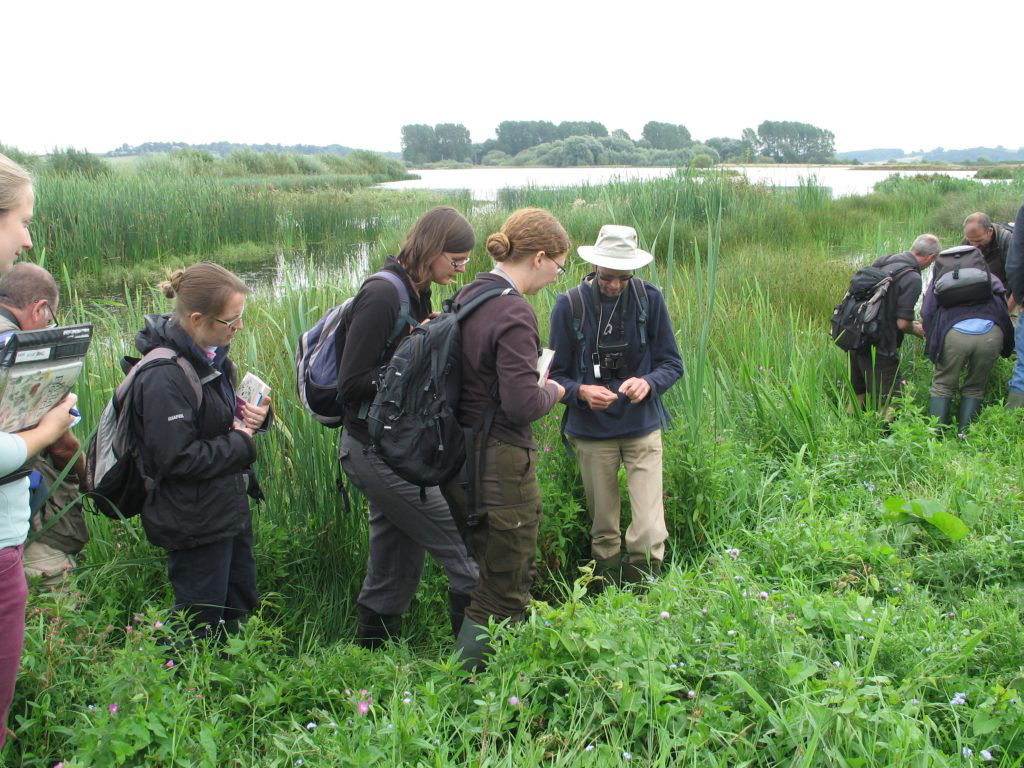What is the BSBI?
12th December 2016
The Botanical Society of Britain & Ireland (BSBI) has been promoting the study, understanding and enjoyment of British and Irish wild plants since 1836. Find out more in this guest post from Louise Marsh, Communications Officer with BSBI.

We support all botanists – beginner or expert, amateur or professional – as they identify, record and map which plants grow where. Our data and knowledge underpin the conservation of the British and Irish flora and we have become one of the world’s largest providers of biological records, providing scientific data to academia, conservation bodies and policy makers. Here are some examples of what we do and how we can help you get involved, whatever your current skill level.
If you are just getting started with wildflower identification, you may like our ‘Ten Helpful Hints for Getting Started in Botany’, and if you use social media, you may enjoy taking part in #wildflowerhour. Every Sunday from 8-9pm, hundreds of people share images of any wild flowers they’ve spotted in bloom during the previous week. It doesn’t matter if you are unsure what they are – BSBI botanists will try and help you identify them.
Going out in the field with fellow botanists in your area is an excellent way to start picking up identification tips and beginners are always warmly welcomed at local meetings, most of which are free of charge. It’s also great fun looking at wild flowers with like-minded people! You can use the interactive map on our homepage to find out what’s happening in your area or check out our Local Botany page. Many local groups will be holding New Year Plant Hunts between 1st and 4th January 2017. Why not join us in finding out what’s in bloom in midwinter? Last January, botanists were out plant hunting across Britain and Ireland and found an astonishing 653 species in bloom. More here.

There are some useful aids to identification here and we also have a growing gallery of authoritative species accounts for some of our less common plants. Our plant distribution maps and Online Atlas of the British and Irish flora will also help you find out more about a particular plant. Here, for example, is the distribution map for Adder’s-tongue Spearwort and here is the Atlas entry.
If you are considering a training course to help you improve your plant identification skills, our Training page lists providers of a range of courses, from short courses aimed at beginners to undergraduate courses. There is also Identiplant, the very popular on-line identification course. A BSBI training grant scheme offers small grants to help budding botanists: details are available on the Training page. We also support initiatives by partner organisations to help young botanists, such as the Field Studies Council’s Young Darwin Scholarships.
BSBI works closely with partner organisations to bring you more opportunities to get involved and more resources to help you. We’ve teamed up with the Centre for Ecology & Hydrology, JNCC and Plantlife to bring you the National Plant Monitoring Scheme. This is a habitat-based plant monitoring scheme which aims to provide robust and much-needed data on changes in our wild plants and their habitats. Once registered, participants benefit from training workshops, helpful videos and publications, and a mentoring system.

On-line resources to help you as you start recording are available here; we also publish a regular News & Views blog to keep you informed and a monthly newsletter for recorders: eNews is available free to download here along with details of our membership newsletter and scientific journal New Journal of Botany, both of which are only available to members. Other membership benefits include discounted rates on a range of botany books and access to our networks of expert plant referees (105 referees covering 180 difficult plants/groups, and two dedicated referees to support beginner botanists) and almost 200 County Recorders who co-ordinate local recording activity across Britain and Ireland.
We run a national programme of field meetings across Britain and Ireland, including a residential Summer Meeting. The chance of encountering wild flowers you don’t see every day, in interesting locations and in the company of fellow wild flower enthusiasts, is probably as big a draw as a meeting’s main focus on recording or training. Our meetings are open to non-members (although BSBI members have priority) and most of the non-residential meetings are free of charge. Details are here. We also hold indoor meetings including an Annual Exhibition Meeting, Recorders’ Conference(s), country meetings and training workshops.
BSBI boasts an impressive publications history, from our ground-breaking Atlas of the British Flora in 1962 to the recent Hybrid Flora of the British Isles, the England Red List and our series of BSBI Handbooks for difficult plants. Two new handbooks (for violets and eyebrights) are scheduled for publication in 2017. We also help fund local Floras and Rare Plant Registers. Our next major publication will be our third atlas, due out in 2020. Recording for Atlas 2020 is well underway but there are still several ways that you can get involved – more details here.
For an overview of some of the recent achievements of our Science Team, and how their research (based on records collected by our thousands of members and supporters out in the field) is contributing to our understanding of subjects including climate change, threatened plants, invasive species, the scale of plant extinctions and how our flora is changing over time, please click here.
 You can find out more about BSBI’s aims and our research, outreach and training programmes on our website, and you can keep in touch with us via social media here and here.
You can find out more about BSBI’s aims and our research, outreach and training programmes on our website, and you can keep in touch with us via social media here and here.
